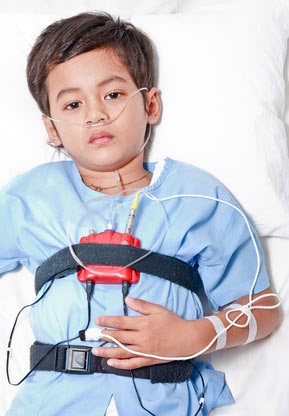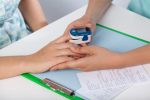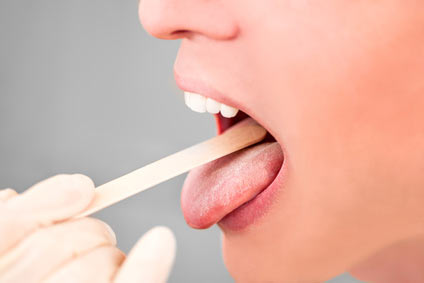Home Sleep Study Devices
Diagnosing Sleep Apnea with Home Test Screeners

Discover 7 home sleep study devices that can help you learn more about your quality of sleep.
Wouldn't be nice to diagnose sleep disorders with a home sleep study rather than spending a lot of money an time for a sleep study in the laboratory?
Home testing for sleep apnea idea is not new, and is being more widely accepted. The problem is that a lot of people still do not know about it...
The basic principle is that anything that can get more people diagnosed with sleep apnea, the better. The patients are treated quickly and more lives are saved.
In this page you'll learn about:
- Advantages for choosing Home Sleep Studies
- The Watermark Ares Home Sleep Test Device
- Stardust II Sleep Recorder
- Alice PDx Sleep Recorder
- SleepView Home Sleep Monitor
- Zeo Sleep Personal Coach
- The iBrain™ Single-channel EEG Recording Device
- SleepStrip Home Testing Device
Advantages for Choosing a Home Sleep Study:
Do you know how many of the people who suffer from sleep apnea are studied in sleep clinics?
Based on the Wisconsin Cohort data, Dr. Terry Young estimated that no more than 15% of the patients out there were actually studied for sleep disorders.
Thus, there are millions of people who are not aware of their sleep breathing disorders, and suffer cardiovascular damage night after night.
And...the reasons for this disparity between the number of people with sleep disorders and the number of studies actually performed can be:
- the limited number of available beds in the hospital
- the relatively small number of sleep specialists
- the lack of awareness of the medical community and of the public for the clinical significance of sleep breathing disorders.
| Home Sleep Studies Benefits |
Price - Home sleep study is an ideal solution for those who have no insurance or cannot afford an overnight sleep study. |
Comfort - the home sleep study is a good alternative for those who do not want to spend a night in a hospital, for whatever reason. |
Convenience - the home sleep apnea test is quick, personal, and almost cost free compared to a sleep study in a lab. |
Time - the home sleep study get people diagnosed and treated sooner. |
Waiting list - the waiting list for an overnight study is reduced dramatically and more people get treated sooner. |
Types of Sleep Screeners for Home Apnea Test
Watermark Ares Home Sleep StudyDevice
The Ares device (The Apnea Risk Evaluation System) has just received The Food and Drug Administration (FDA) clearance to be used as a sleep test device in patient's home. It measures the respiratory effort during sleep, heart rate, airflow, and oxygen saturation.
The accuracy of Ares is very similar to a PSG device from a sleep center - the failure rate compared to a PSG is only 2%.
Here is how to use the Ares Sleep Testing Device:
Stardust II Sleep Recorder
Stardust II was designed by Phillips Respironics to help you get a more comfortable sleep test in your own home.
The unit is very small and ultra-portable, using 3 sensors that measure the breath rate, pulse rate and oxygen saturation, and respiration effort. It can also measure the compliance with your CPAP theray.
Alice PDx Sleep Recorder
Alice PDx is also a home sleep test device from Phillips Respironics. It was the winner of the 2010 Medical Design Excellence Awards (MDEA) competition.
The diagnostic evaluation for obstructive sleep apnea is more advanced than in other home sleep test devices, helping the patients and clinicians to avoid the costs associated with retesting.
SleepView Home Sleep Monitor
SleepView is the lightest, smallest and portable sleep monitor from Cleveland Medical Devices Inc. It's a FDA approved device and recommended by the American Academy of Sleep Medicine.
The SleepView measures heart rate, pulse oximetry, pressure based airflow, respiratory effort and body position.
The iBrain™ Single-channel EEG Recording Device
The iBrain - similar to Zeo - measures the brain waves or brain activity during sleep. This device can offer insight into the diagnosis and treatment of conditions such as Alzheimer's, autism, cancer, epilepsy, depression, and schizophrenia.
This invention received the Most Innovative New Product Award in 2010.
However, compared with Zeo, the iBrain can also replace a visit to a sleep study, helping you diagnose sleep apnea or other sleep disorder in your own home. You can read about this statement on iBrain website or by watching the following video:
SleepStrip Home Testing Device
The Food and Drug Administration (FDA) has approved a sleep apnea screener device for home testing, called SleepStrip.
It is also known as the "electronic mustache" because of its appearance, that traces nasal airflow to keep track of full or partial apneas for the purpose of identifying people at high risk of sleep apnea syndrome.
The SleepStrip contains:
- a built-in microprocessor to analyze the breathing patterns of the patient.
- thermosensors for sensing airflow, one for each nostril and one for the mouth.
- a display to show the recorded results to the physician.
- and a three volt lithium battery to power the unit.
There are also two "wings" with adhesive to hold the SleepStrip to the upper lip.
Here is how to use the SleepStrip home sleep study device:
- before going to bed, wash your face with soap and water, and dry it thoroughly, to insure good adhesion.
- position the two small nose sensor prongs just beneath the nostrils, facing away from you.
- position the SleepStrip over the upper lip, with the center bridge placed bellow your nose.
- now you need to test the good placement of the device, by checking that the sensors are measuring airflow. Just look into a mirror, breathe normally alternating expirations between nose and mouth. At each breath, you should see a red light on the right side of the SleepStrip.
- after all these steps, you can go to sleep and the home sleep study device will record five hours of your breathing.
If you can't see the red blinking light, you need to readjust the device until airflow from both nostrils and the mouth are reaching the sensors.
The red light should go off in about 20 to 30 minutes.
If you can't understand the steps, maybe a video turorial can help you:
In the next morning, the red light should be blinking rapidly to indicate a successful home sleep test. If not, you can repeat the study.
After the successful study, you can return the SleepStrip to the physician so that he can review and discuss with you the results.
There are important aspects that you should need to know regarding home sleep test devices:
- the best way to diagnose sleep apnea syndrome is in a properly equipped sleep lab, with a well trained and attentive technician scoring the data, and an expert physician writing the report.
- the purpose of SleepStrip is not to provide an exact diagnosis of sleep apnea syndrome, but to provide a simple, cost-effective sleep apnea screening of large number of people.
- a positive SleepStrip finding should be viewed as a high likelihood of sleep breathing disorders, that should be followed by a diagnostic test with polysomnography.
- SleepStrip home sleep test device is an important tool particularly in younger people who, even if they have severe apneic episodes, are less symptomatic and hates the idea of spending a night in the sleep lab connected to electrodes.
- The SleepStrip is the home sleep study tool that can allow millions of undiagnosed people, to test their likelihood of having sleep apnea.There is no way the health system can afford in-lab testing for all of them without some kind of proper screening, and there is no chance they will suddenly realize they need a study on their own.
- The home sleep study device is intended for screening the masses, identifying the moderate and severe patients (at least) at a very reasonable cost, and bringing them into the sleep labs, so doctors can help them.
For them, a positive finding should be a powerful incentive to seek a professional help and diagnostic sleep study.
Home › Sleep Study › Home Sleep Study







